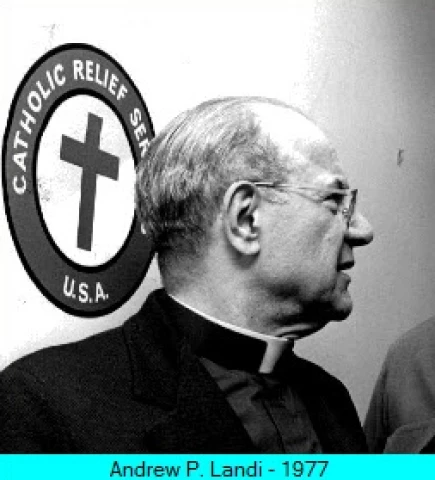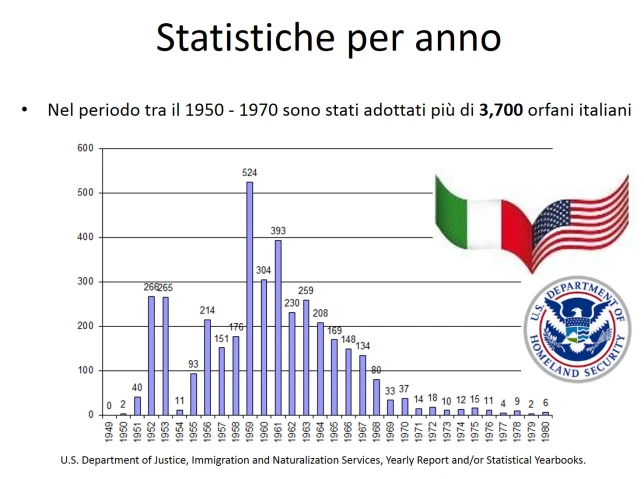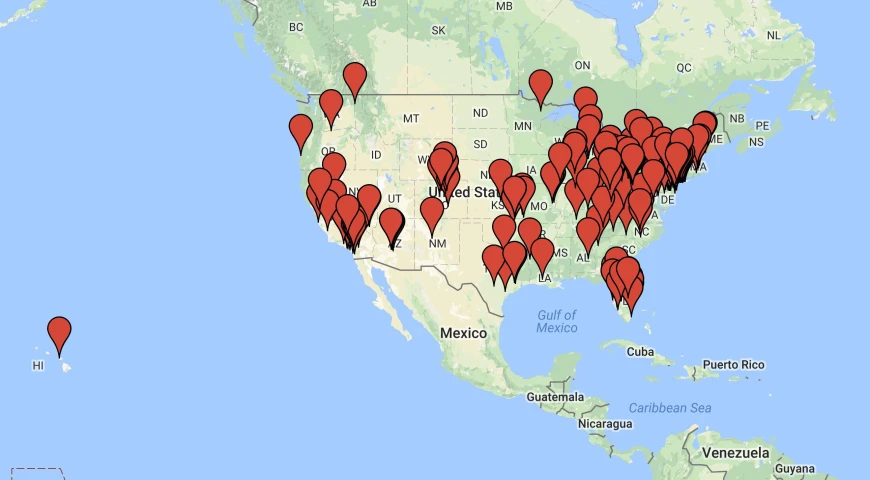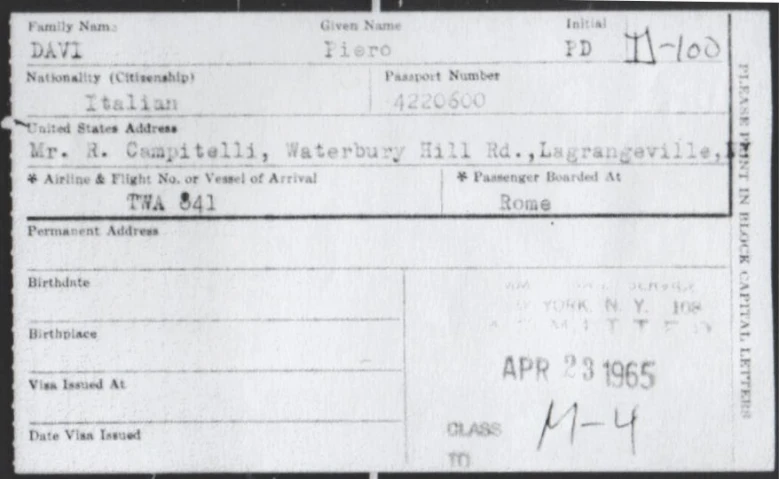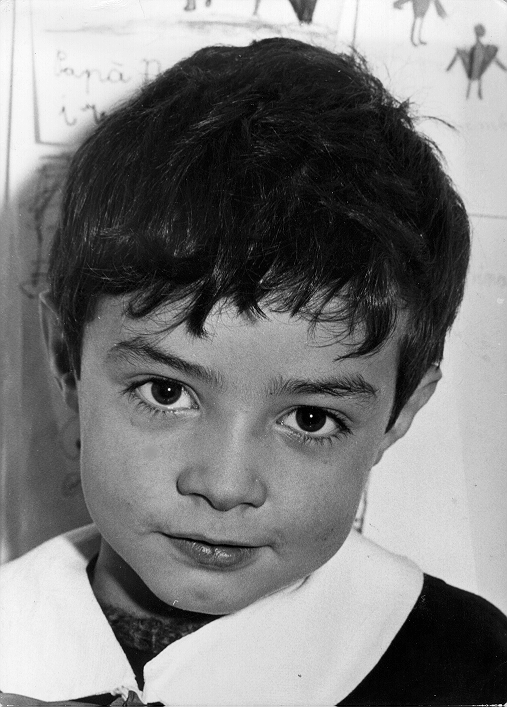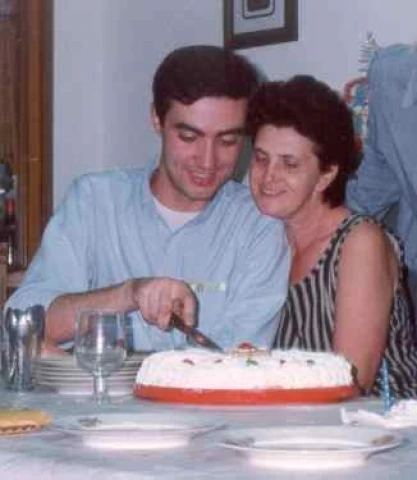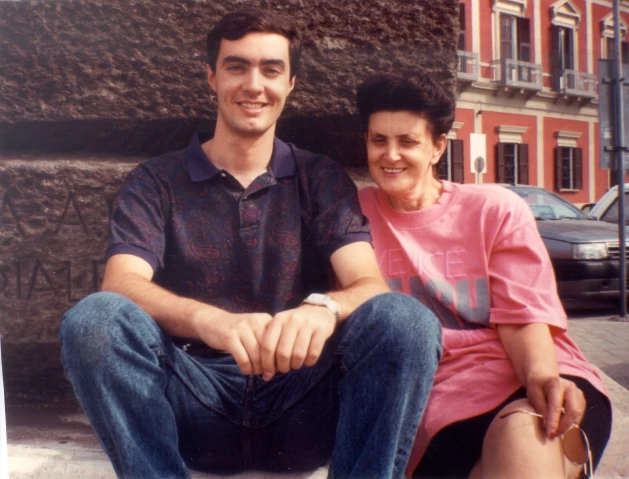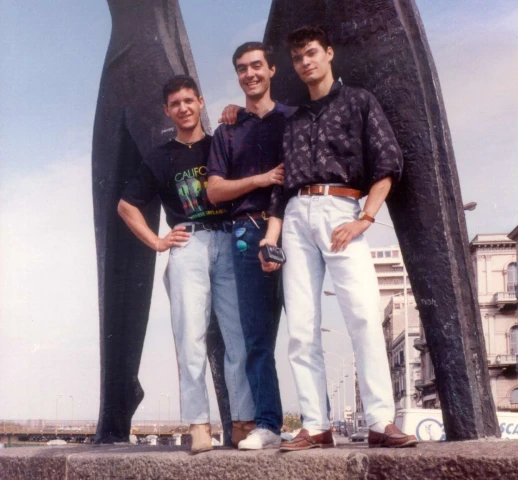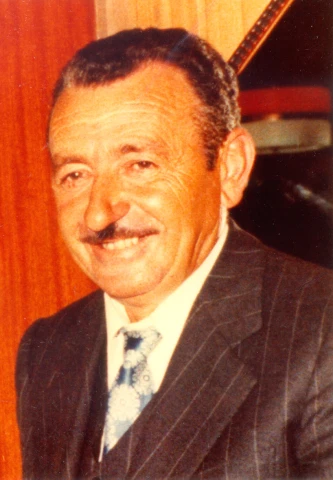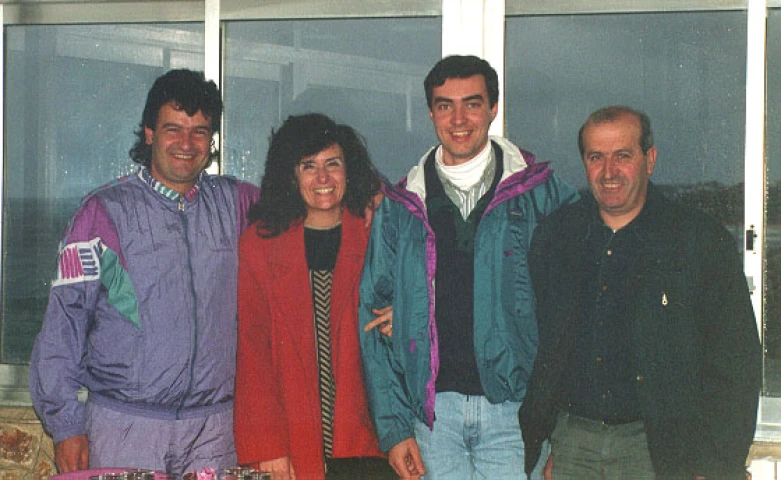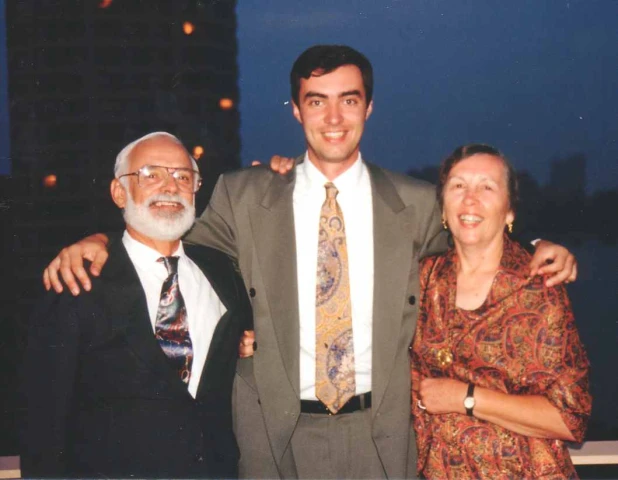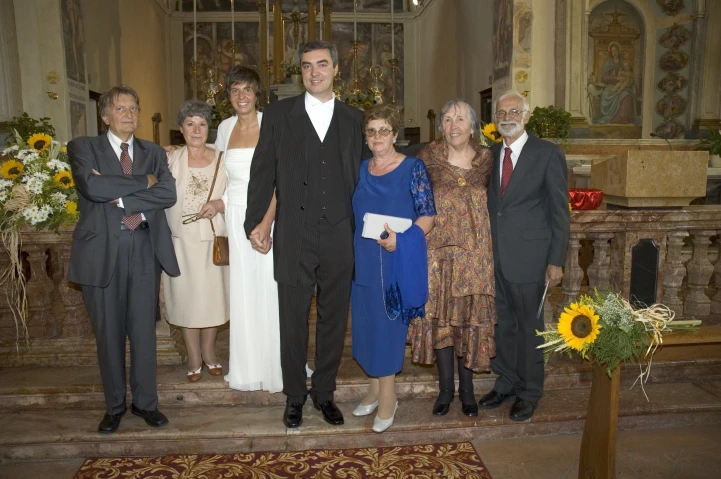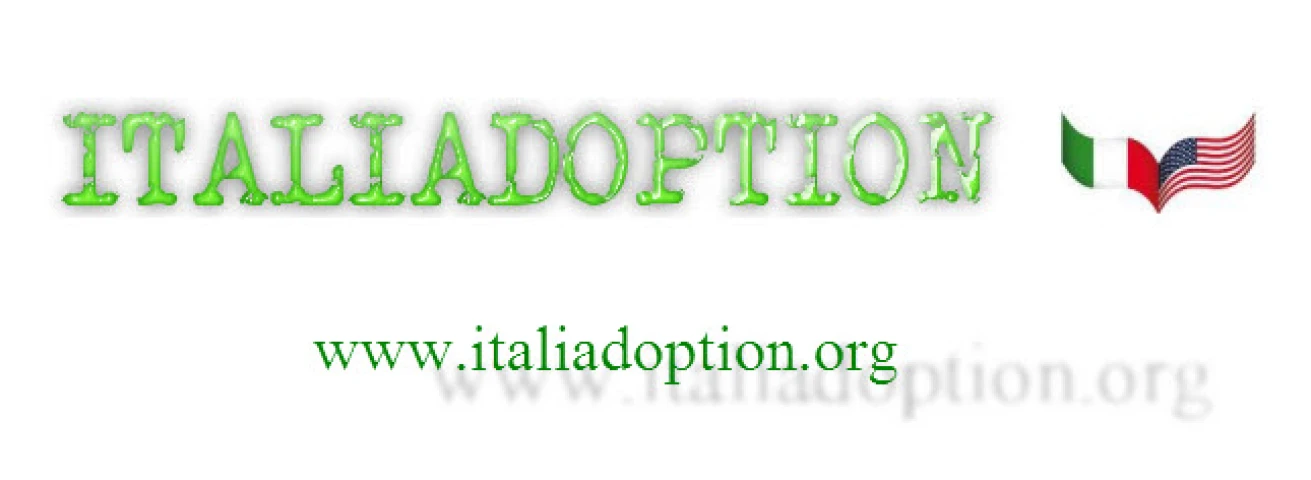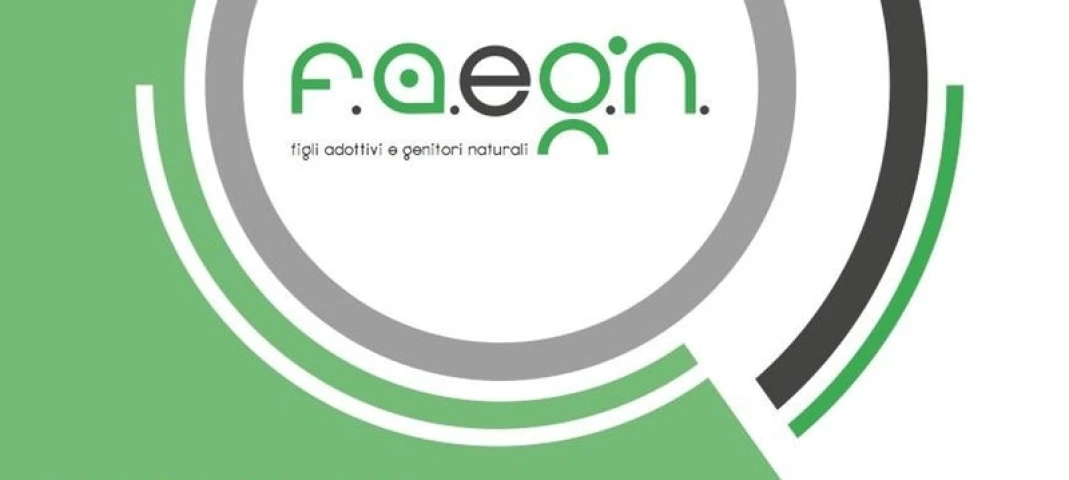At the end of World War II, Italy was a country in great difficulty. Relieved by leaving behind a terrible period, but with a difficult reconstruction in front of them, the Italians counted many situations of poverty and great discomfort. In this historical and cultural context, a forgotten page of Italian history reemerges, a page in which the United States, also through the commitment of ordinary citizens, not only gave material and economic assistance, but decided to welcome into their families thousands of children who had been left in the orphanages and institutes scattered throughout Italy. Through two agencies appointed and authorized by the Italian government to facilitate international adoptions, these "orphans" emigrated to a new continent and a new life.
In recent times, this delicate issue has returned to the attention of the mass media because many of them now intend to reclaim their origins, by asking for access to the identity of their biological parents and by recognition of their dual Italian and American citizenship. We talk about it with John Battersby Campitelli, one of the pioneers of this difficult journey back in time.
John, an article written by Silvia Cassamagnaghi, titled "The adoption of Italian children in the United States. The work of the Catholic Relief Service and the Catholic Committee for Refugees" has recently been published. Can you please describe us this topic?
Italy is today one of the first countries in the world to receive children through international adoptions, but few people remember that a few decades ago it was one of the countries with the largest number in the world of emigrations for adoption. What were the dynamics, and where did these "orphans" of the Italian diaspora end up? This is the main theme developed by FrancoAngeli in the magazine "Italia Contemporanea" and written by the researcher Silvia Cassamagnaghi of the University of Milan, with whom I have been collaborating for some time.
One of the two international bodies that proved most actively involved in international adoptions from Italy was the Catholic Committee for Refugees (CCR) of the National Catholic Welfare Conference (NCWC), which was entrusted with the protection of Catholic children emigrated from Italy. The other body in charge was the International Social Service of the Italian Red Cross (CRI), but with much smaller numbers.
The massive campaign for adoptions, carried out in the twenty years from 1950 to 1970 by the American Catholic community, created in fact a huge demand for European children. Italy (in addition to Ireland, which was in second place) became the ideal pool of supply, due to its particular economic, social and religious characteristics, and the "flexibility" shown by its government, convinced that the path of international adoptions was an excellent solution so that these young children could not experience misery.
You've done extensive and in depth research: which numbers are we talking about? And what geographic areas are affected by this topic, both in Italy and in the United States?
According to the Immigration and Naturalization Service statistics, and by carefully analyzing the passenger lists published in the American archives (readable online), and thanks to the work carried out by the JRC and the SSI, we know that between 1950 and 1970 more than 3,700 Italian children were welcomed by American families, mostly of Italian American origin. This created a sort of unprecedented "migratory chain", since - in the application forms - aspiring parents often expressly indicated that they wanted only young children from the Italian peninsula.
From the data we processed, and of which we have requested official confirmation from the Ministry of Foreign Affairs in Rome (which was in charge to give permission to the expatriation and the authorization to the Police Headquarters of Rome for the issuance of the passport to the minor), it appears that the greatest concentration of the places of departure in Italy were the large urban cities (Turin, Milan, Venice, Florence, Florence, Rome, Naples and Palermo), that had suitable facilities to accommodate pregnant mothers and were large enough to hide any "uncomfortable" pregnancies.
As far as the destination in the United States is concerned, we requested precise data to the Italian Embassy in Washington DC, which was responsible for the legal protection of the "orphans" during the whole phase of integration into American families, but we are still waiting for an answer. However, from the analysis of the data we have today, we already have evidence that the most affected States by the diaspora are New York, Ohio, Pennsylvania, New Jersey and California.
John, you are one of the living witnesses of this incredible experience. Please, tell us your story
Already from my name, John Pierre Campitelli, you can understand that I am half Italian and half American! As a professional, I am an IT engineer, I have been working for over twenty years in an American multinational company with offices in Italy, and as such I often find myself crossing the ocean to deal with the marketing and renewal of corporate communication and collaboration tools.
I feel myself a real protagonist and direct interested in this incredible experience because I was born in Italy in 1963 to "unknown" parents. A few days later I was handed over from my first mother (or biological mother) to the Provincial Institute for Childhood in Turin. I remained there almost two years until April 1965, when I emigrated to the United States to be adopted by my Italian American parents (my paternal grandfather had in fact emigrated to the United States in 1910, for other reasons).
Only in 1991, after four years of assiduous research, I finally managed to find the woman who gave me my life using anonymous childbirth, a common situation for the other real protagonists of this affair, the women who left - many of them despite themselves - their children in the hands of Italian institutions, and who until now have not been represented except through an intermediary.
We should also listen to the voices of women like my mother Francesca, who suffered the torment of having to irreparably separate themselves from their children who had been carried in their womb for nine months, aware that the bigot mentality of the time would not allow them to grow them as calmly as they would have liked. We should also not forget those biological fathers who had a role in our conception.
For us children, too, there has been the trauma of abandonment, a primary wound that is difficult to heal, because it remains an indelible mark in our essence that is difficult to understand for those who have not personally lived it.
On this specific topic, you have created an association called Italiadoption…
The rediscovery of my origins was for me an unforgettable and decisive moment in the decision to sublimate a pain and turn it into something positive. For this reason I committed myself to set up an association of mutual help for adoptive children and biological parents who express the desire to recompose their past and find themselves: this is how in 1989 I founded the Italiadoption association in the United States.
Through the commitment of more than 300 members scattered throughout the United States, and in close collaboration with the Italian Association of Adopting Children and Natural Parents (F. A. e G. N.), Italiadoption has three main goals. We aim to find the more than 3,700 "orphans" of the Italian diaspora; to maintain a register of personal data that can be consulted online linked to a database of DNA profiles (#DNAdozione) in order to facilitate and verify the discovery of their relatives through the use of genetic genealogy; and to document the stories of each of them and share them on social media.
Two are the results we want to achieve: the right to our origins (#dirittoalleorigini) without discrimination of any kind, and the recognition of double Italian and American citizenship for all children of the diaspora without bureaucratic delays.
These stories are intertwined with the theme of Italian citizenship, with the dual reference to both the recovery of it by those who lost it, and the Italian debate on Jus Soli. What lessons can be learned from your experiences on this topic?
Precisely because today's Italian law on citizenship provides for Jus Soli, the right to citizenship acquired by birth on Italian soil for those born of "unknown" parents (in fact, the full act of birth have to bears the words "woman who does not allow to be named"), the majority of the children of the Italian diaspora in the United States are actually Italian citizens, because they were naturalized American citizens when they were still minors.
It is a pity, however, that not everyone is aware of the problems inherent in the procedures for enrolment with A.I.R.E. (the Registry of Italians Resident Abroad) because of the effects of foreign adoption, which was often not transcribed on the margins of birth certificates in the municipalities of origin, causing a discrepancy in personal details. There have been many cases of Italian children adopted in America who have been denied the issue of passports because in Italy they were still registered with the old name given by the registry office before adoption. Not to mention the fact that women in the United States change their surname with the marriage, which is problematic for the registration in Italy. Me myself I have seen my name entered in the register of wanted persons, because Italy considered me a draft dodger!
Unfortunately, over the years, we have encountered considerable problems in exercising our right to our origins and to dual citizenship, precisely because of the lack of knowledge of this subject and because there is not yet a uniformity of procedures in the various Italian consular districts in the United States.
As a personal experience, I would like to conclude by recalling that it has already been difficult for me to leave my country of origin to go and live in a new culture and learn a new language and to have to deal with different habits and customs. For this reason, whatever we can do to facilitate the integration of our children even at school can only increase their self-esteem and make them feel equal to their peers.
In conclusion, what can we tell our Italian American readers about this little-known page in the history of the relations between our two countries?
The appeal that I would like to make to all the Italian Americans who follow We the Italians is to tell us if they are aware of people involved in this situation, so that we can get in touch with each other and then help us to recognize our right to dual citizenship and to access our origins.
Alla fine della seconda guerra mondiale, l'Italia era un Paese in grande difficoltà. Sollevati per aver lasciato alle spalle un terribile periodo, ma con una difficile ricostruzione davanti a loro, gli italiani contavano molte sacche di povertà e di grande disagio. In questo contesto storico e culturale riemerge una pagina dimentica della storia italiana nella quale gli Stati Uniti, anche attraverso l’impegno di comuni cittadini, riversarono non solamente assistenza materiale ed economica, ma decisero di accogliere nelle loro famiglie migliaia di bambini che erano stati lasciati nei brefotrofi ed istituti sparsi sul territorio italiano. Attraverso due enti preposti ed autorizzati dal governo italiano ad agevolare l’adozione internazionale, questi “orfani” emigrarono verso un nuovo continente ed una nuova vita.
Negli ultimi tempi questa delicata tematica è tornata alla ribalta dei mass media perché molti di essi intendono ora riappropriarsi delle loro origini chiedendo l’accesso all’identità dei propri genitori biologici e al riconoscimento della loro doppia cittadinanza italiana e americana. Ne parliamo con John Battersby Campitelli, uno dei pionieri di questo arduo percorso a ritroso nel tempo.
John, di recente su questo argomento è stato pubblicato l'articolo, scritto da Silvia Cassamagnagi, dal titolo: "L’adozione di bambini italiani negli Stati Uniti. L’operato del Catholic Relief Service e del Catholic Committee for Refugee". Ci puoi descrivere meglio il tema?
L’Italia è oggi uno tra i primi paesi al mondo per accoglienza di bambini attraverso le adozioni internazionali, ma pochi si ricordano che qualche decennio fa era tra i paesi con maggior numero di emigrazioni a scopo di adozione al mondo. Quali erano le dinamiche, e dove sono finiti questi “orfani” della diaspora italiana? E’ proprio questo il tema principale sviluppato dal recentissimo articolo pubblicato da FrancoAngeli nella rivista “Italia Contemporanea” e scritto dalla ricercatrice Silvia Cassamagnaghi dell’Università degli Studi di Milano, con cui collaboro ormai da tempo.
Uno dei due enti internazionali che si dimostrò più attivamente coinvolto nelle adozioni internazionali dall’Italia fu il Catholic Committee for Refugees (CCR) della National Catholic Welfare Conference (NCWC), a cui venne affidata la tutela dei bambini cattolici emigrati dall’Italia. L’altro ente preposto era il Servizio Sociale Internazionale (SSI) della Croce Rossa Italiana (CRI), ma con numeri molto più ridotti.
La massiccia campagna per le adozioni, portata avanti nel ventennio dal 1950 al 1970 presso la comunità cattolica americana, creò di fatto un’ingente domanda di bambini europei: l’Italia (oltre all’Irlanda che era al secondo posto) divenne il bacino di offerta ideale, per le sue particolari caratteristiche economiche, sociali e religiose e per la “flessibilità” dimostrata dal suo governo, convinto che la via delle adozioni internazionali fosse un’ottima soluzione affinché questi piccoli non sperimentassero miseria e abbandono in Italia.
Avete fatto lunghe e approfondite ricerche: di che numeri parliamo? E quali aree geografiche vengono toccate da questo argomento, sia in Italia che negli Stati Uniti?
Secondo le statistiche della Immigration and Naturalization Service ed analizzando accuratamente le liste passeggeri pubblicati negli archivi americani (consultabili online), e grazie al lavoro svolto dalla CCR e dal SSI, sappiamo che tra il 1950 e il 1970 oltre 3.700 bambini italiani vennero accolti da famiglie statunitensi, in maggioranza di origine italoamericana, creando una sorta di inedita “catena migratoria”, dal momento che spesso, nei moduli di richiesta, gli aspiranti genitori specificavano espressamente di volere solo piccoli provenienti dalla penisola italiana.
Dai dati da noi elaborati, e dei quali abbiamo chiesto ufficiale conferma al Ministero degli Affari Esteri a Roma (che doveva dare il permesso all’espatrio ed il nulla osta alla Questura di Roma per il rilascio del passaporto al minore), risulta che la maggior concentrazione dei luoghi di partenza in Italia furono i grandi centri urbani (Torino, Milano, Venezia, Firenze, Roma, Napoli e Palermo) che avevano strutture idonee per accogliere le gestanti madri ed erano sufficientemente estesi da poter nascondere eventuali gravidanze “scomode”.
Per quanto riguarda la destinazione negli Stati Uniti, abbiamo richiesto dati precisi all’Ambasciata Italiana a Washington DC che era deputata alla legale tutela degli “orfani” durante tutta la fase d’inserimento nelle famiglie americane, ma siamo ancora in attesa di una risposta. Comunque, dall’analisi dei dati oggi in nostro possesso, abbiamo già evidenza che gli Stati maggiormente impattati dalla diaspora sono quelli di New York, Ohio, Pennsylvania, New Jersey e California.
John, tu sei uno dei testimoni viventi di questa incredibile esperienza. Ci racconti brevemente la tua storia personale?
Già dal mio nome, John Pierre Campitelli, si capisce che sono mezzo italiano e mezzo americano! Anche come professione, sono ingegnere informatico, lavoro da oltre vent'anni in una multinazionale americana con uffici in Italia, e come tale mi trovo spesso a varcare l’oceano per occuparmi della commercializzazione e dei rinnovi di strumenti di comunicazione e collaborazione aziendali.
Mi sento un vero protagonista e diretto interessato in questa incredibile esperienza perché sono nato anche io in Italia nel 1963 da genitori “ignoti”. Pochi giorni dopo sono stato consegnato dalla mia prima madre (o madre biologica) all'Istituto Provinciale per l'Infanzia di Torino dove sono rimasto quasi due anni fino ad aprile 1965 quando sono emigrato per gli Stati Uniti per essere adottato dai miei genitori italoamericani (mio nonno paterno era infatti emigrato negli USA nel 1910 per ben altre ragioni).
Solamente nel 1991, dopo quattro anni di assidue ricerche sono finalmente riuscito a ritrovare la donna che mi ha donato la vita avvalendosi del parto anonimo, situazione comune per le altre vere protagoniste di questa vicenda, le donne che hanno lasciato - molte loro malgrado - i loro figli nelle mani delle istituzioni italiane e che fino ad oggi non sono state rappresentate se non per interposta persona.
Dovremmo far parlare anche loro, donne come mia madre Francesca, che hanno sofferto sulla loro pelle lo strazio di doversi separare irreparabilmente dai loro figli che avevano portato in grembo per nove mesi, consapevoli che la mentalità bigotta dell'epoca non avrebbe permesso loro di crescerli serenamente come avrebbero voluto, senza dimenticare anche quei padri biologici che hanno avuto un ruolo nella nostra concezione.
Anche per noi figli c’è stato il trauma dell’abbandono, una ferita primaria che difficilmente si riesce a sanare, perché resta un marchio indelebile nella nostra essenza che è difficile da comprendere per chi non ci è passato in prima persona.
Su questi temi, hai dato vita ad un'associazione che si chiama Italiadoption. Ci dici qualcosa in più?
La riscoperta delle mie origini è stato per me un momento indimenticabile e determinante nella decisione di sublimare un dolore e trasformarlo in qualcosa di positivo, e per questo che mi sono impegnato a costituire un'associazione di mutuo aiuto per figli adottivi e genitori biologici che esprimono il desiderio di ricomporre il loro passato e di ritrovarsi: è così che nel 1989 ho fondato negli Stati Uniti l'associazione Italiadoption.
Attraverso l’impegno di oltre 300 membri sparsi in tutti gli Stati Uniti ed in stretta collaborazione con l’associazione italiana Figli Adottivi e Genitori Naturali (F.A.e G.N.), Italiadoption si prefigge l'arduo compito di ritrovare gli oltre 3.700 "orfani” della diaspora italiana, mantenere un registro anagrafico consultabile online collegato ad una banca dati di profili del DNA (#DNAdozione) onde agevolare e verificare i ritrovamenti dei propri congiunti attraverso l’uso della genealogia genetica, ed infine di documentare le storie di ciascuno di loro e di condividerle sui social media.
Gli obiettivi sono due: vogliamo ottenere il #dirittoalleorigini senza discriminazioni di nessun genere, e vogliamo il riconoscimento della doppia cittadinanza italiana e americana per tutti i figli della diaspora senza lungaggini burocratiche.
Queste storie si intrecciano con il tema della cittadinanza italiana, con il duplice riferimento sia al riconoscimento della stessa da chi pensava di averla persa, sia al dibattito italiano sullo Ius Soli. Quali sono gli insegnamenti che possono venire su questo tema dalle esperienze da voi trattate?
Proprio dal fatto che la legge italiana odierna sulla cittadinanza prevede lo Ius Soli, il diritto alla cittadinanza che si acquisisce per nascita sul suolo italiano per coloro che sono nati da genitori “ignoti” (sull’atto integrale di nascita deve risultare infatti la dicitura nato da «donna che non consente di essere nominata»), la gran parte dei figli della diaspora italiana negli Stati Uniti sono effettivamente anche cittadini italiani perché sono stati naturalizzati cittadini americani quando ancora minorenni.
Peccato però che non tutti sono al corrente delle problematiche insite nelle procedure dell’iscrizione all’A.I.R.E. per via degli effetti dell’adozione estera, che spesso non veniva trascritta a margine degli atti di nascita nei Comuni di provenienza causando una difformità nelle generalità anagrafiche. Ci sono stati molti casi di figli italiani adottati in America che si sono visti negare il rilascio del passaporto perché in Italia risultavano registrati ancora con il vecchio nome assegnato dall’anagrafe prima dell’adozione. Per non parlare del fatto che le donne negli Stati Uniti cambiano il cognome con il matrimonio che risulta problematico per le iscrizioni anagrafiche in Italia. Io mi sono addirittura visto iscrivere nel registro dei ricercati perché considerato renitente alla leva!
Abbiamo purtroppo riscontrato negli anni problemi non indifferenti nell’esercitare un nostro diritto alle origini e alla doppia cittadinanza, proprio per la mancanza di conoscenza della materia e per il fatto che non c’è ancora una uniformità procedurale nelle varie circoscrizioni consolari italiane negli Stati Uniti.
Come esperienza personale, vorrei concludere ricordando che per me è già stato difficile lasciare il mio Paese di origine per andare a vivere in una nuova cultura e imparare una nuova lingua e dovermi confrontare con usi e costumi diversi: per questo, qualsiasi cosa possiamo fare per facilitare l’inserimento dei nostri figli anche in una realtà scolastica potrà solo aumentare la loro autostima e farli sentire uguali ai loro coetanei.
In conclusione, cosa possiamo dire ai nostri lettori italoamericani circa questa pagina poco conosciuta della storia dei rapporti tra i nostri due Paesi?
L'appello che io vorrei lanciare a tutti gli italoamericani che seguono We the Italians è di segnalarci se sono a conoscenza di persone coinvolte in questa vicenda, affinché si riesca a metterci in contatto tra di noi per poter poi aiutarci a riconoscere la nostra doppia cittadinanza e il diritto ad accedere alle nostre origini.



